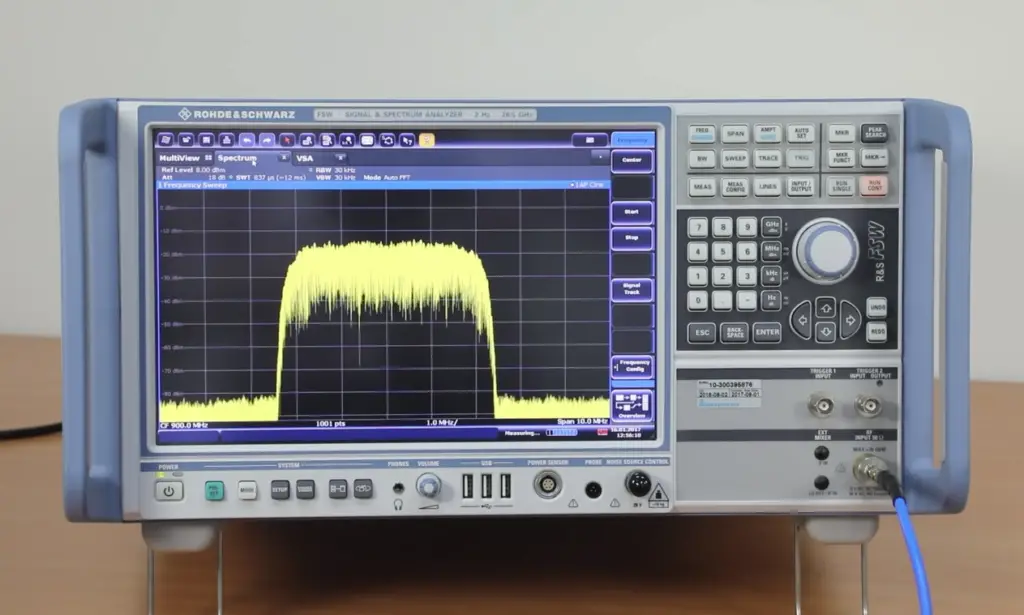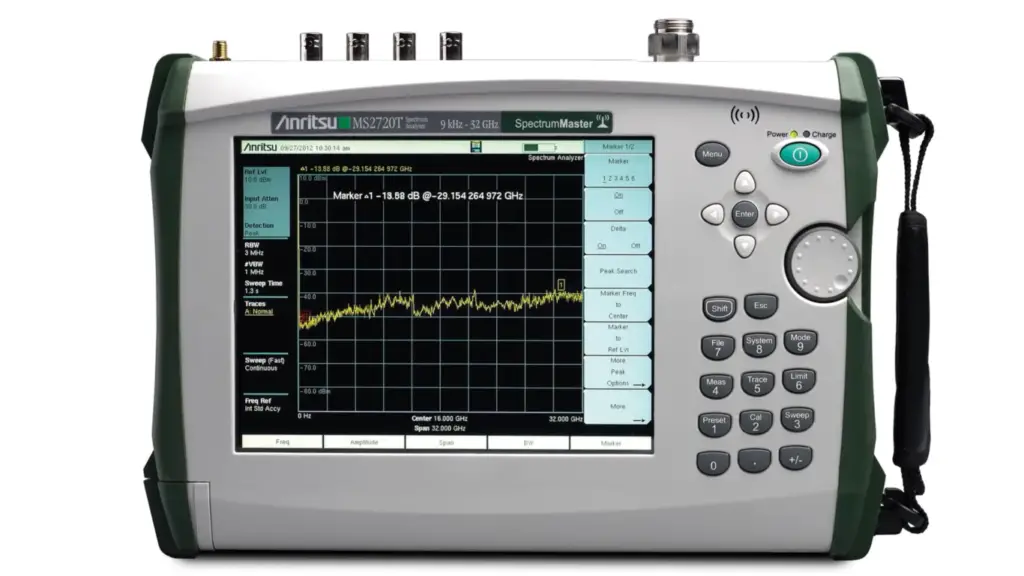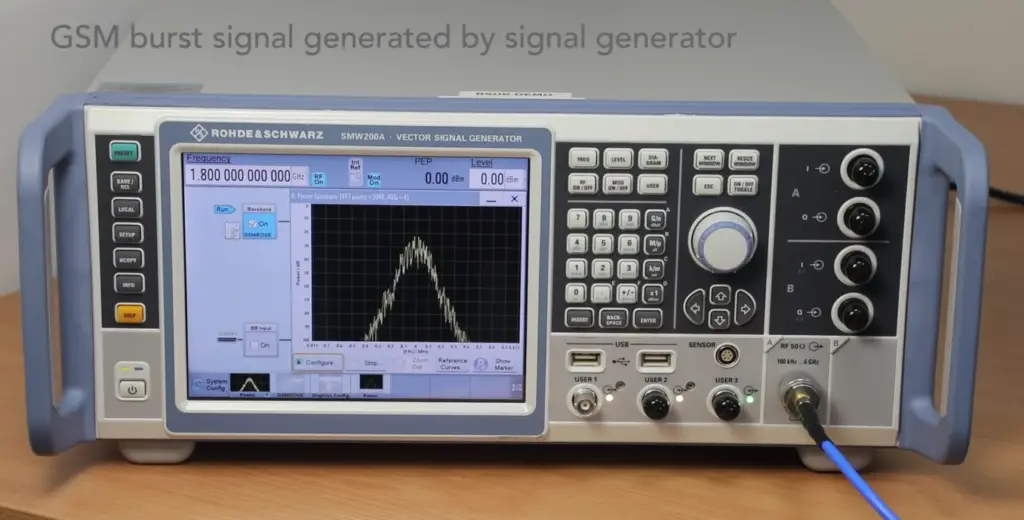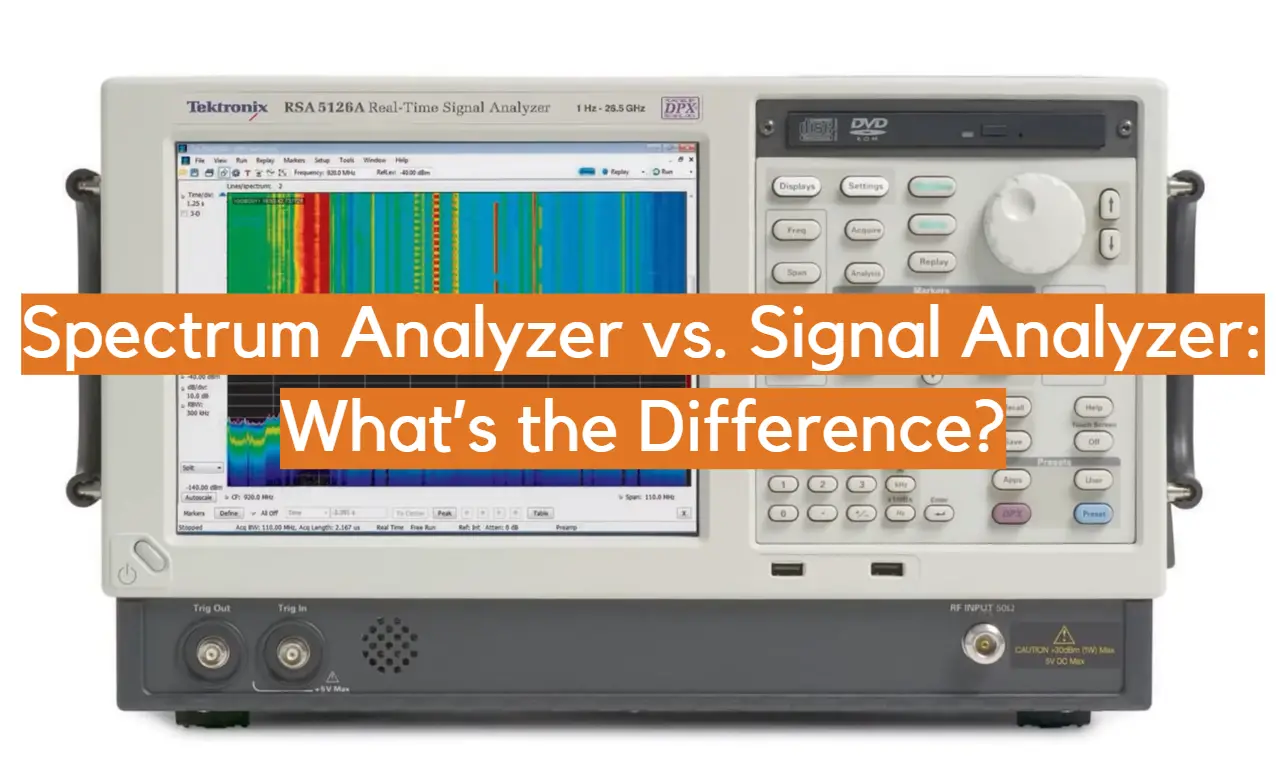Do you know the difference between a spectrum analyzer and a signal analyzer? If not, don’t worry, you’re not alone! These two types of instruments are often confused with each other, but they are actually quite different. In this article, we will discuss the differences between spectrum analyzers and signal analyzers, as well as when you might want to use one or the other. We’ll also provide some tips on how to choose the right type of analyzer for your needs. Let’s get started!
Spectrum Analyzers in General
They are often used to identify and analyze emissions from other sources, such as radio transmitters. Frequency components of a signal can be measured with accuracy for complex signal analysis. Spectrum analyzers are also useful for troubleshooting, detecting interference, and measuring signal power levels.

At its core, a spectrum analyzer consists of an input section (for receiving signals), an amplifier, filters to separate frequencies, and an analog-to-digital converter (ADC) that converts the analog output of the filter into digital data which can be processed by software or viewed on a display.
Like many other types of sophisticated test equipment, spectrum analyzers come with many features and options that affect their accuracy and performance. These include dynamic range, noise floor, sensitivity, resolution bandwidth (RBW), sweep time, video bandwidth (VBW), sweep mode, span setting, frequency settings, etc. All of these parameters can be adjusted for different measurement requirements.
Spectrum analyzers are mainly used in the radio frequency (RF) and microwave field, but they are also frequently used in other fields such as telecommunications, radar systems, signal processing, audio engineering, and medical imaging. [1]
Signal Analyzers in General
A signal analyzer has two main functions – the first is to measure the frequency, amplitude and noise levels of a given signal and the second is to provide information about its characteristics such as spectrum components, modulation type, etc.
Signal analyzers are like a spectrum analyzer in that they both measure signals but with different approaches. Signal Analyzers tend to use mathematical algorithms or “software” modules to process a wide range of data quickly rather than scanning through all frequencies like traditional Spectrum Analyzers do. This allows for more accurate measurements over a wider frequency range since Digital Signal Analyzers (DSAs) can be used to provide high-resolution measurements at multiple frequencies and over long periods of time.

Signal analyzers are mainly used in laboratory or high-end industrial applications where there is a need to analyze complex signals. Examples include medical imaging, telecommunications, broadcasting and automotive systems. [1]
Differences Between Spectrum and Signal Analyzers
Now that we’ve looked at the basics of spectrum and signal analyzers, let’s take a closer look at how they differ. After all, you’d want to know the differences between these instruments before investing in them for your applications.
Inputs
The main difference between the two lies in their inputs. A spectrum analyzer operates with amplitude modulation (AM) and frequency modulation (FM), which are types of analog signals. On the other hand, a signal analyzer works with digital signals such as quadrature amplitude modulation (QAM) and time division multiplexing (TDM).
This is a key factor to consider when selecting a tool for your application. If you’re dealing with analog signals, then a spectrum analyzer will be the better choice. But if you’re working with digital systems, then a signal analyzer is what you need.
Bandwidth size
Bandwidth size describes the range of frequencies that can be accurately measured by the device. These frequencies range from a few hertz up to hundreds of megahertz, depending on the type of device being used.

A spectrum analyzer can typically measure frequencies of up to 20GHz, whereas a signal analyzer is limited to about 6GHz. Typically, the higher the frequency range, the more expensive your instrument will be.
Use of DSP
Digital Signal Processing (DSP) is a branch of engineering concerned with the processing of digital signals. This includes signal acquisition, measurement, manipulation and analysis. In essence, it refers to the process of taking an analog signal (such as sound or light) and converting it into a digital representation that can be analyzed by computers.
The use of DSP allows us to measure, analyze and manipulate complex signals very quickly and accurately. It’s widely used in many areas such as telecommunications, audio/video processing, speech recognition and medical imaging.
Another of the key differences between spectrum and signal analyzers is the use of digital signal processing (DSP). A spectrum analyzer uses analog filters to separate frequencies while a signal analyzer uses mathematical algorithms to process data quickly as we already mentioned. This allows a signal analyzer to provide more accurate measurements over a wider frequency range compared to a traditional spectrum analyzer.
Channel amount
When choosing between a Spectrum Analyzer and a Signal Analyzer, one of the most important things to consider is the number of channels available. The number of channels affects the ability to measure multiple signals at once and compare them.
Spectrum analyzers typically have more channels than signal analyzers – up to 4 or 8 depending on the model. This allows for simultaneous measurements of several signals, making it easier to identify interference, which can be difficult with just a single channel.
Signal analyzers usually only offer 1 or 2 channels, but may also include options such as an Auxiliary Input port that can be used to collect additional data from external instruments. With this added flexibility, they may still be suitable for multi-channel measurements, but only if the signals are being measured separately.

Ultimately, it’s important to determine how many channels you need for your application and decide if a spectrum or signal analyzer is better suited to your needs. With enough channels, either type of instrument can be used effectively for multi-channel measurements. Understanding their differences will ensure you make the right choice when purchasing an analyzer.
Noise floor
The noise floor of a device refers to the amount of ambient background noise that can be detected by the sensor. This amount of noise affects how accurately signals are measured, as well as what types of frequencies can be detected.
A higher noise floor means that there will be more interference in the measurements, making it harder to detect signals accurately and find weak ones. A lower noise floor allows for better detection of weak signals which can allow for improved accuracy.
In general, spectrum analyzers have lower noise floors than signal analyzers due to their greater sensitivity and ability to detect weaker signals. This could make them more suitable for certain types of measurements, such as RF signals or microwave signals. But signal analyzers often have more features which make them ideal for characterizing signals over a wide frequency range.
Resolution
Lastly, we will discuss resolution. Resolution determines the minimum measurable size of a signal and is typically expressed in decibels (dB). The higher the resolution, the more detailed information you can obtain about your signal. A spectrum analyzer generally has better resolution than a signal analyzer because it uses different techniques to measure signals.
A spectrum analyzer measures signals by sweeping across frequency bands with a filter that captures and displays every possible point on a specific range of frequencies. This method allows for greater detail when analyzing signals. On the other hand, signal analyzers use discrete sampling techniques to capture only certain points on each frequency band, which produces less precise results.
It is important to note that the resolution of spectrum analyzers and signal analyzers can be affected by a number of factors, including bandwidth, noise floor, and dynamic range. To ensure accurate results, it is best to consult your manufacturer’s specifications to determine the resolution of the instrument before making a purchase. [1]
Are Spectrum Analyzers and Signal Analyzers Interchangeable
No, spectrum analyzers and signal analyzers are not interchangeable. While they may both be used to measure and characterize signals, each type of instrument is better suited for certain types of applications due to their differences in features and specifications.
So if you need to measure, analyze and characterize signals for your particular application, it is important to understand the features of both instruments in order to choose the right one.
Spectrum analyzers are better suited for measuring the power and frequency characteristics of RF signals. They are often used in radio frequency (RF) test applications that require high-resolution frequency measurements, such as with wireless communication systems, radar systems, or aerospace/defense testing.

Signal analyzers on the other hand are better at measuring low-level signals and noise in wide bandwidths. These types of analyzers tend to have higher dynamic range than spectrum analyzers and can also be used for analyzing digital modulation formats like PSK or FSK. Signal analyzer applications include radio emission tests, RF component testing, and surveillance systems.
FAQ
What spectrum analyzers can measure?
Spectrum analyzers are instruments used to measure frequency, amplitude, and power of a given signal. They can be used to detect any disturbances or interference in the transmission path and pinpoint the source. Spectrum analyzers measure a wide range of frequencies from low-frequency audio signals up to high-frequency radio waves.
Spectrum analyzers also measure other parameters such as noise level, distortion and modulation depth. Additionally, they are capable of displaying and plotting several different types of graphs such as spectrograms, bar charts and scatter plots for easy visualization of data.
What is the signal and spectrum analyzer?
A signal analyzer, also known as a Vector Signal Analyzer (VSA), is an instrument that measures and displays the characteristics of radio-frequency signals. It can measure the frequency, amplitude, phase, and distortion of a signal to determine if it meets the performance requirements for its intended application. A spectrum analyzer is similar to a VSA, but it only provides information about the spectral content of signals in terms of power versus frequency.
Signal analyzers offer more detailed analysis capabilities than spectrum analyzers. For example, they are able to evaluate modulation accuracy or detect errors in digital communication systems. They are also used by engineers working on communications systems such as cellular networks and Wi-Fi networks to ensure that their equipment meets performance requirements.
What is the difference between signal generator and signal analyzer?
Signal generators and signal analyzers are two separate pieces of test equipment used to evaluate signals. Signal generators generate signals that can be used to measure characteristics such as frequency, power, distortion and response in other components or systems. Signal analyzers measure the characteristics of existing signals and compare them against known standards.
A signal generator creates a signal with specific parameters including amplitude, frequency and modulation. It is a useful tool for testing circuits or components since it produces signals which can be measured using other instruments like oscilloscopes or spectrum analyzers. On the other hand, a signal analyzer measures properties of an existing signal such as frequency, power level, noise floor etc., without generating any new signals itself. It is typically used for troubleshooting, debugging and characterizing existing signals in a system.
What is the purpose of a spectrum analyzer?
A spectrum analyzer is a specialized instrument used to measure and analyze the power of spectrums of electrical signals across a given bandwidth. It typically comprises an input amplifier, detector, display device, and attenuator. The purpose of using a spectrum analyzer is to detect anomalies in the frequency domain that may not be visible on an oscilloscope or other digital measurement equipment. For example, it can be used to identify harmonic distortion in communication systems, evaluate modulation accuracy in wireless transmitters, investigate interference problems with RF receivers, diagnose antenna issues in cellular networks, etc.
Spectrum analyzers are generally more sensitive than signal analyzers at detecting low-level signals and have higher resolution for displaying spectral data, which makes them ideal for analyzing signals that have a wide range of frequencies.
Useful Video: What is a Spectrum Analyzer | How Does a Spectrum Analyzer Work
Conclusion
So this concludes our guide to the differences between a spectrum analyzer and a signal analyzer. Hopefully, you now have a better understanding of how they are different, as well as their individual advantages and disadvantages.
Spectrum analyzers provide broad coverage, but lack flexibility in their control capabilities. Signal analyzers offer more precise measurements with greater accuracy and control, but are limited in their frequency range. Ultimately what tool you use will depend on the specific needs of your application.
In this article we have explained all the differences between both types of analyzers. We have given you an overview of the differences between spectrum and signal analyzers, how they are different, their advantages and disadvantages. We hope that this article has been a helpful guide to educating you on the differences between spectrum and signal analyzers.
If you have any questions or would like to discuss further, please contact us for assistance in selecting the best tool for your needs. Thanks for reading!
We wish you all the best in finding the perfect signal or spectrum analyzer for your needs!
References
- https://www.electronicdesign.com/technologies/test-measurement/article/21804863/whats-the-difference-between-signal-analyzers-and-oscilloscopes-for-frequency-analysis














Leave a Reply